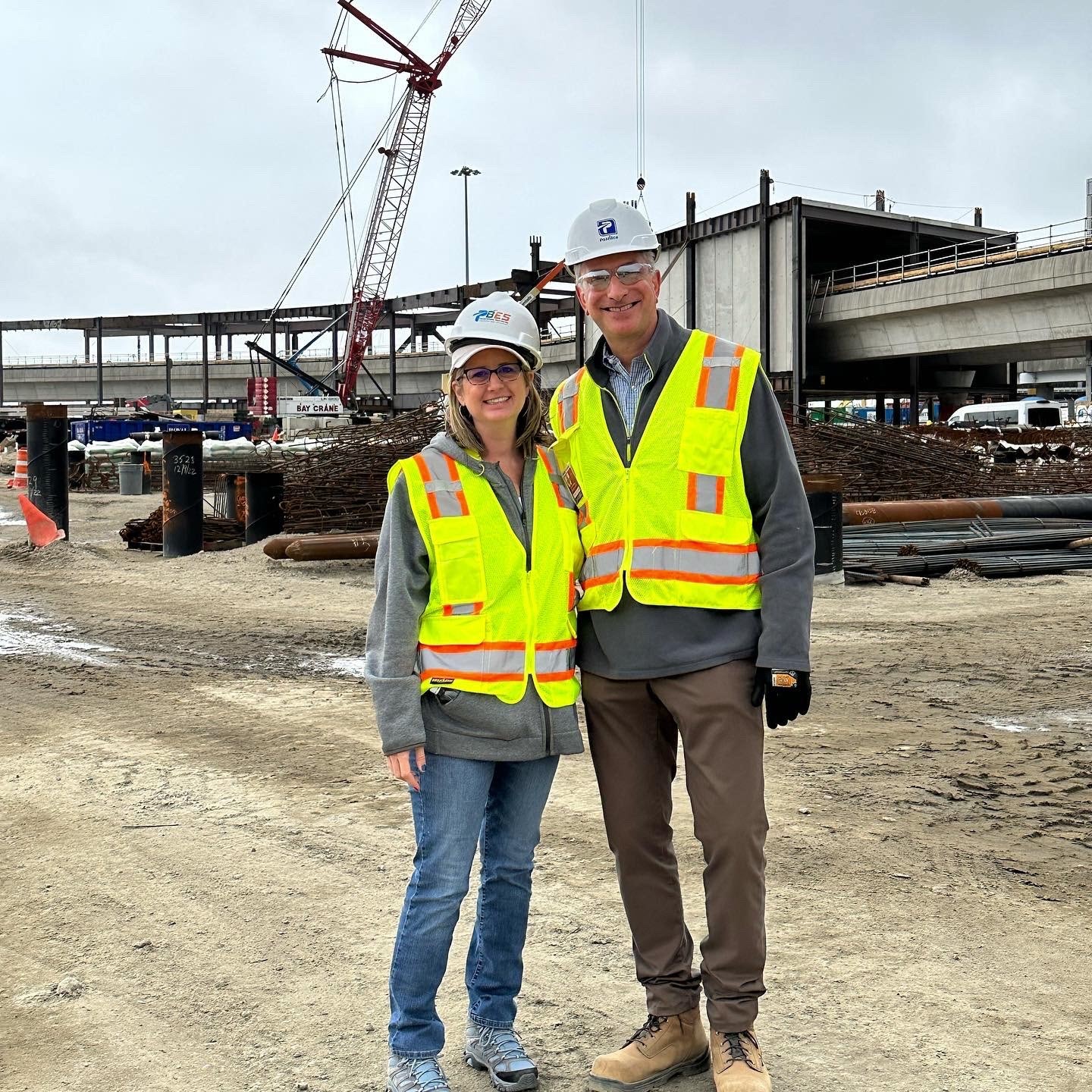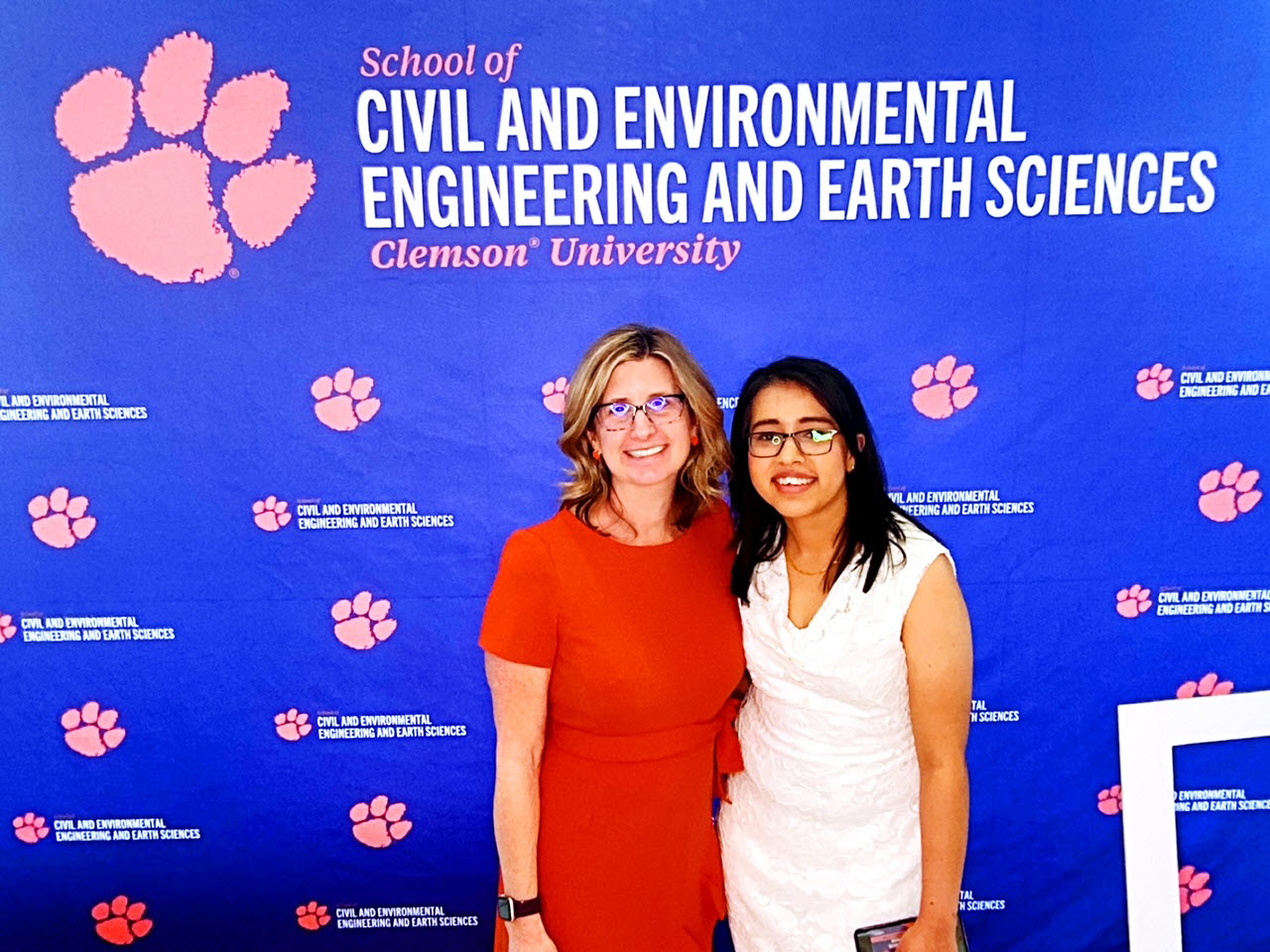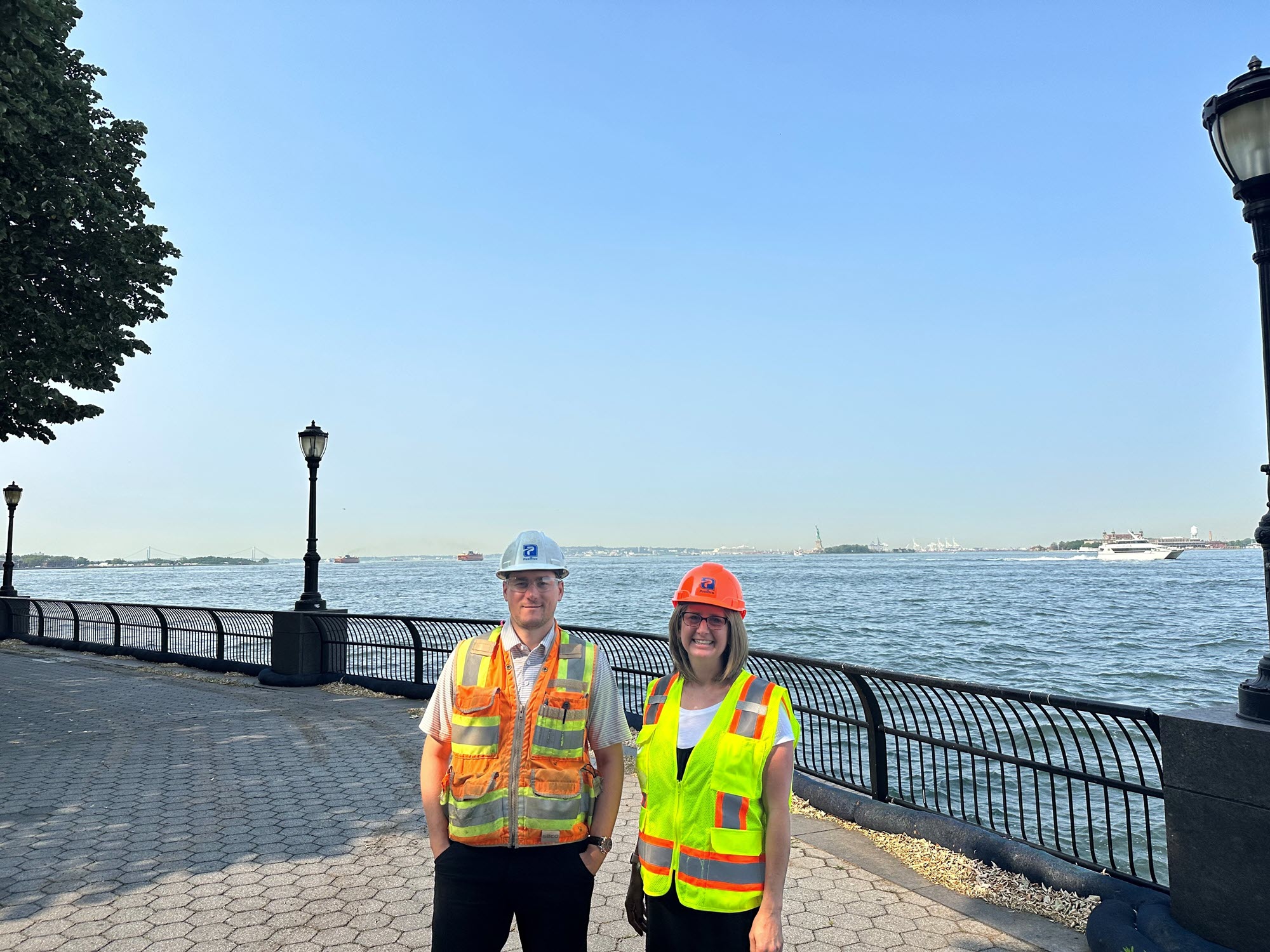Here’s this woman. Coal miner’s daughter who grew up in a tiny town in central Appalachia and now lives in a tiny town in southern Appalachia with her husband, two kids, and two dogs. Her academic interests are firmly rooted in the arts and humanities; she has a degree in newspaper journalism and a master’s in business administration. Never took an engineering class in her life.
That’s me, by the way – the woman who is much more at home diagramming a sentence than creating free-body diagrams.
So, what was I doing last June, immersing myself in the world of civil engineering?
The easiest answer is that I was working for Posillico Inc., a Farmingdale, New York–based heavy civil construction firm; the city of Clemson; and Bunnell Lammons Engineering, a geotechnical, environmental, and construction materials firm based in Greenville, South Carolina.
My goal was to see how civil engineering firms work. Not in any theoretical or hypothetical sense. I didn’t want to know only what a textbook had to tell me about civil engineering. No, I wanted to see it for myself. I wanted to bring real-world examples and writing samples back to my classroom. And, if I’m honest, to hopefully gain credibility and respect among faculty and students.
See, I’m not an engineer. But I teach engineers – or those who would become engineers, anyway.
Like everyone else, engineers need to know how to write and speak well. That’s where I come in. And I figured one of the ways I could be better at it was to show my students that I’ve been in the civil engineering trenches myself.
Last summer confirmed what we all at Clemson University believe: communication skills are vital to civil engineers. And if our students are going to be successful in the field, they can’t just know how to design a strong bridge or stormwater drainage system. They need to know how to share their designs and ideas effectively with non-engineers.
 Rachelle Beckner
Rachelle Beckner In the room where it happens
I am a part of the Arch Initiatives, a new program at the Glenn Department of Civil Engineering at Clemson University. This initiative revolutionized our curriculum and department by bringing communication instruction into engineering courses. In academia, we often emphasize the importance of knowledge and technical prowess. Still, while spending my summer at civil engineering firms, I discovered that relationships are the secret sauce in the business of building bridges.
Engineers, listen up: I’m here to tell you that success hinges on the ability to connect through effective communication.
Picture this: I, the communication lecturer, was thrust into the inner workings of a civil engineering firm. I quickly realized that the intricate dynamics of client relationships, team collaborations, and vendor interactions are as vital as any equation in a textbook. The truss for carrying the load during a successful engineering career is professional skills, especially effective communication.
Posillico understands the role it plays. And that means something. After all, their reputation is impeccable. The Posillico name carries much weight. In its 77-year existence, Posillico has meant quality, assurance, trust, and dependability. The company slogan is “We Know How,” and they do. They know how to do business right.
 Rachelle Beckner
Rachelle Beckner The art of conflict management
As the saying goes, teamwork makes the dream work. In proposal planning meetings, heated discussions turn into collaborative problem-solving sessions. That’s why Posillico executives train project managers in conflict management, which is instrumental in any job.
While I usually teach my students to persuade and negotiate, I’ve learned the valuable lesson of turning disagreements into opportunities for innovation. The pressure of time and money is when the “true colors” come out. As one Posillico team member shared, “Anyone can design when those elements are there. It’s what you can do in those heated moments that matters.”
Teams who look for opportunities and don’t point fingers will find true success. “No one has all the answers,” another Posillico team member shared. Experience is great, but there are variables to each job. When someone acts like a know-it-all and doesn’t explore other possibilities, it can dampen innovation and harm company culture.
There is no place for arrogance in this work. This approach can lead to costly – even dangerous – mistakes. This is an unattractive trait in team members – quelching dialogue, collaboration, and trust. It can lead to resentment and discontent, and ultimately, the “problem person” can be booted from the team to reestablish equilibrium in team dynamics.
When a team member behaves as if they have all the answers, then conflict arises. A difficult person can bring down morale and make everyone not want to work on the project.
This discovery reinforced that we are getting it right at the Glenn Department of Civil Engineering. We emphasize teamwork and project-based learning from the sophomore year up. Students often struggle with the idea of a team member impacting their grade, which can lead to conflict. In my class, we emphasize that when the team wins, you win.
I’ve yet to meet many engineers who enjoy confrontation. But it’s essential to address conflict upfront rather than let it fester into something bigger – and more destructive. I’ll accept the groans when my students participate in team-building exercises or learn to write constructive feedback (spoiler alert: they don’t like it very much). But these assignments will remain a pillar of my work because it will pay dividends throughout their careers.
Conflict is typically the result of a lack of communication, so I stress to the students to share clear expectations with team members, learn to manage their and other’s expectations, and understand personalities.
 Rachelle Beckner
Rachelle Beckner The devil is in the details
Back in the classroom, I emphasize the importance of details and deadlines. But let me tell you, the meticulous nature of civil engineers puts even my obsession with grammar to shame.
Engineers pore over plans, inspect job safety, and scrutinize proposal specs as if their lives depended on it. Because they do. And, sometimes, so does the job. A missed deadline or a missing specification can be the difference between landing or not landing an $80 million project. Attention to detail ensures the safety of the workers and the public who will drive along the roadways engineers build, cross the bridges designed by engineers, and admire skyscrapers.
Students need to learn the consequences of missed deadlines and poor performance – when it’s safer for them to do so. The costs aren’t that great when you’re in college, still learning the ways of the world.
Engineering beyond the equation
In civil engineering, I’ve learned that every challenge is an opportunity to apply principles that I’ve taught my students. Engineering, at its core, is about problem-solving, and as I immersed myself in the field, I discovered that solutions aren’t just found in equations and technical expertise. They are also rooted in effective communication, teamwork, and an unwavering commitment to delivering excellence.
Just as professionals in the field must confidently tackle problems humbly, our role as educators is to coach our students to do the same. It’s not just about seeking the “correct” number but also about embracing the possibility that failure is a stepping stone to growth. At the heart of engineering work are people who will ultimately use the product. Successful engineers understand the value of collaborating with their teammates and building strong, lasting relationships.
While I’ll continue to help students develop their voices, build confidence in public speaking, and write concisely and precisely, these life lessons forged in the crucible of real-world experience will remain at the forefront of their education. It’s these professional skills and character traits that will translate to greater success.
In the end, whether in the classroom or the field, the bridge between academic knowledge and practical application is built upon the pillars of effective communication, teamwork, and a commitment to excellence. It’s a bridge I’ve been privileged to cross and one that I’m excited to guide my students across as they prepare to enter the engineering world. They will be fortified with the wisdom that the correct answer is as important as the relationships we build and the solutions we create together.
Rachelle Beckner is the communication lecturer in the Glenn Department of Civil Engineering at Clemson University. A West Virginia native, she earned her bachelor’s degree in journalism and an executive MBA from West Virginia University. She resides in central South Carolina with her husband, two daughters, and two dogs. Beckner relates to words and people more than numbers and enthusiastically learns about the fascinating world of civil engineering.



